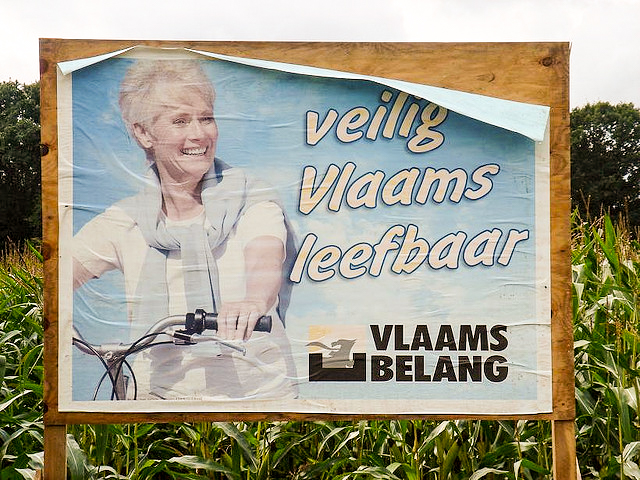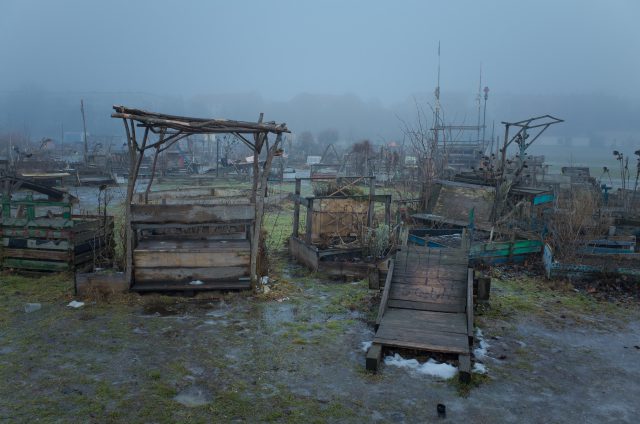European intellectuals can be divided between those who embrace history, and those fleeing from it. Marx and his intellectual progeny (up to Louis Althusser) represent the first sort. Men make their own history, as Marx once averred, but they do not do so under conditions of their own choosing. For structuralists and post-structuralists, by contrast, the role of history is, at best, secondary for understanding human life. This goes a long way towards explaining why Foucault, whose interest in history can be gauged from the enormous extent of his archival researches, always rejected attempts to be pigeonholed with such a designation.
By contrast, the noted Belgian literary theorist Paul de Man fits in quite well. As a collaborator in the development of deconstruction with Jacques Derrida, de Man elaborated a position critical of fixed notions of identity and truth. As Evelyn Barish’s minutely researched biography of de Man makes clear, his own relationship to truth, particularly as it related to the narrative structure of his own life, was often quite tenuous, when not simply nonexistent. There are many terms which might be used to describe Paul de Man. Anti-Semite hardly seems to fit, since most people who knew him before and after his days as a journalistic collaborator with National Socialism (even those with good reason to wish him ill) insist that he was not. Opportunist seems closer to the mark, yet there are a number of points in de Man’s personal history which make that sort of simplistic cynicism a hard sell. Perhaps narcissism comes closest to the mark, for in his personal conduct just as much as in his professional life, the central motivation seems to be a belief in the justice of whatever was called for to preserve a universe in which de Man was the central body.
Questions about de Man’s legacy and legitimacy surfaced with particular intensity in 1988, when the Belgian graduate student Ortwin de Graef uncovered de Man’s work for three Nazi-supported publishing houses during the German occupation of Belgium in the early 1940s. As a columnist for Le Soir (volé), one of Belgium’s widest circulating newspapers, taken over by the the Nazis when they occupied the country in the spring of 1940, de Man wrote frequently on contemporary art and literature. The anti-Semitic views that he expressed were, to be sure, much more muted than the violently racist drivel published by other contributors, but it was undeniably present, as was a sympathy for an underlying cultural homology between Flemish culture and the Nazi German culture.
As Barish notes, these revelations resulted in a storm of controversy. They came hot on the heels of the publication of Victor Farías’s Heidegger and Nazism, as well as the internal debates (and resignations) at the journal Telos over what some viewed as their overly sympathetic engagement with and appropriation of the work of the unapologetic Nazi jurist Carl Schmitt. The revelations about de Man had rather a different flavor. Both Heidegger and Schmitt were European figures, popular (and divisive) among scholars on the other side of the Atlantic but carrying limited cachet in North America. De Man, on the other hand, had taught at a number of prestigious American universities (Bard, Harvard, Cornell, and Yale) and had numerous friends and admirers in the community of literature theorists in the United States. That their friend and colleague might have worked for publishing houses whose directors has been sentenced to death for collaboration (although those sentences were commuted) was a shock. That he had explicitly espoused anti-Semitism seemed beyond the pale of plausibility.
Barish’s biography, by far the most searching and extensive to date, provides important clarification of de Man’s historical record and the lengths to which he went in order to rejig the narrative of his life over and over again. The picture that emerges is, in fact, considerably less flattering than even de Man’s most dedicated partisans might have feared. Paul de Man was the son of a well-to-do manufacturer of x-ray equipment. His early life was marked by tragedy. His older brother Rik, developmentally disabled and probably a serial sexual predator, was killed by a train when Paul was 16. A year later his mother, who had long suffered from depression, committed suicide in the attic of the family him, with Paul himself discovering the body. Yet less than a month later he was able to pass his school leaving exams with flying colors, betraying nothing of the traumas of his life to his fellow students.

He enrolled at the Université libre de Bruxelles, first in mathematics and engineering (at which he had excelled in secondary school) and later in social sciences. De Man failed to qualify for a degree, largely because he lost interest in his studies, preferring to participate in the intellectual and literary life of the university. He was a prominent figure in the Cercle du Libre Examen, a left liberal student group that put out a journal addressing cultural and political topics. It is indicative of the effects of the war and occupation that several members of the journal’s editorial board would go on to fight with the resistance, while several others would be active collaborators.
De Man’s world, like that of so many other Belgians, was severely disrupted by the Nazi invasion in May 1940. Unlike many of his compatriots of varying political stripes who rallied to the defense of the nation, de Man took an extended vacation in the south of France, living in an odd ménage a trois with his mistress and her husband. Returning to Brussels in August 1940, he was a man with ambitions but few concrete prospects. He had failed to pass (or in some cases even to take) his exams in any of the subjects that he had studied while at university. But an important family connection paved the way for a new and extremely promising career.
De Man’s uncle was the former socialist turned fascist collaborator Henri (formerly Henrik) de Man, and it was partly through this connection that he was able to secure work for himself in the world of collaborationist press. At 22, de Man became the cultural affairs editor of Le Soir (volé), the Nazi-dominated incarnation of the prewar Le Soir. It was in this capacity that he came to write a piece on the influence of Jews in modern literature for an issue of the paper devoted to its new, anti-Semitic turn. The article was, in fact, quite bland, especially by the nauseous standard set by some of the other contributors. De Man would later claim that he was compelled to write it in order to keep an even worse piece of claptrap from being published in its place. Still, the underlying substance of the article was within the broad outlines of the Nazi worldview. In his journalistic output from the period 1940 to 1943, de Man spoke frequently of the coming New Order, an era of European world hegemony under the leadership of National Socialism. His work was that of an intellectual shill, rather than some more lethal occupation, but he did assist in the Nazi penetration of Belgian culture, for which many others (some of whom his journalistic colleagues) did time in prison after the war.
De Man cultivated the friendship of the Nazi in charge of Belgian cultural affairs, Lothar von Ballusek, and with him conspired to take power over the major Nazi oriented publishing houses in Belgium (particularly Édouard Didier’s Editions de la Toison d’Or.) The coup failed, and de Man was punished by Didier and his allies. He was fired from his position at Le Soir (volé), and (at Didier’s prompting) his actions as a buyer and editor for Ageance Dechenne were also investigated, leading to his termination. As it turned out, this was for the best. De Man aimed in these days for a high post on the postwar Nazi cultural hierarchy, which positions of leadership in publishing would have facilitated. This would certainly have put him in a position to receive the death sentence for collaboration, as did both Didier and Raymond de Becker, de Man’s boss at Le Soir (volé). Both sentences ended up being commuted.
Although de Man’s journalistic exploits became common knowledge in the wake of the 1988 scandal, his activities and aspirations with regard to the higher levels of Nazi publishing were not. Barish presents a clear and extensively researched account of these activities. But, and perhaps more importantly, it is Barish’s description of his downfall at Ageance Dechenne that provides entrée into another crucial aspect of de Man’s character. The investigation into his work there revealed, in addition to some very questionable purchasing decisions, evidence of significant and systematic embezzlement. De Man was, at all points in his life, a spendthrift and he was never particularly concerned with the question of to whom the money he spent actually belonged. This was made patently clear in 1946 when, with help from his father and some other unfortunate investors, de Man set up the Hermès publishing house. Meant to be a vehicle for publishing highbrow works on art, Hermès turned out to be more in the nature of a personal checking account for de Man, who ended up defrauding his investors out of around 1.5 million Belgian francs. With a court case looming, de Man was helped by his father to flee Europe, ending in New York.

While he worked a day job at the Doubleday store on the lower level of Grand Central Station, de Man came to know Dwight MacDonald and Mary McCarthy. Using these connections (and some creative restructuring of his own past) he managed to wrangle a position for himself at Bard. Forced out from that after two years (for a number of sins, including non-payment of rent to another faculty member) he managed to get himself into the graduate program in comparative literature at Harvard. De Man was on the point of being elected as a junior fellow when it was nearly discovered that he had, contrary to the assertions on his résumé, never completed a degree of any kind. He was apparently able to intercept his deficient transcript from the ULB and alter it in such a way as to preserve his candidacy. Throughout these. and many other adventures, de Man evinced a pattern of making connections and falsifying his qualifications in order to lift himself to the levels that his ambitions sought.
De Man finished his career as a department chair at Yale, while also holding another tenured position at the University of Zurich. His academic career is fascinating because it defies so many conventions. He published relatively little. His credentialing was non-existent and was never seriously vetted by any of the institutions with which he was associated in the United States. His scholarly work reflects the same paradox. His forte was the essay. When he had to write longer pieces, sustaining a line of argumentation over more that a brief topic he struggled. He was renowned as a bright and engaged teacher, but could never manage to complete the range of tasks and responsibilities that come with university employment.
Perhaps the most interesting thing about de Man is the way that his philosophical critique of Cartesian subjectivity and of historical knowledge dovetailed with the protean (at time procrustean) needs of his personal narrative. There is an important point of comparison with Heidegger here. Both sought, as Barish notes, to overcome their wartime errors by simply living forward. For both Heidegger and de Man history was a malleable narrative, the most important function of which was as a basis for future life, not for settling the deficient accounts of the past.
The question is often raised with regard to Heidegger as to what role his political views played in his philosophy, with those critical of Heidegger insisting that the two are cut from whole cloth. But to hold this view requires both a very tendentious reading of Heidegger’s work from the early 1920s, as well as a historically impoverished analysis of the work from Sein und Zeit onwards. In the case of de Man, however, the reading of the lifestyle into the work yields much more compelling results. It is not merely the case that his destabilization of historical narratives, and of language itself, played into his need to reconfigure his past to meet present requirements. The fusion of his intellectual orientation with the needs of the immediate moment, with scant consideration for any enduring moral grounding, marks all phases of de Man’s adult life.
But where, then, does this leave us with regard his intellectual output? For those who spend their time sharpening knives against the insufficiencies of post-structuralist literary criticism, this is yet more grist for a mill that turns on an endless supply of obfuscating jargon. In all likelihood, those who would turn away from de Man’s work on the basis of Barish’s debunking of his own historical narrative would probably have been heading in that direction in any case. De Man’s oeuvre is, like so much in the world of post-structuralism, less than the sum of its parts. But he was able to rise very high in academia merely by seeming to possess more cultural capital than that to which his actual credentials gave him a right. The question is not how he managed to fool so many people, still less how could no one have realized what a bad person he was. Rather, the question it raises is that of the relationship between seeming to have the right intellectual capital (plus a few good connections) and the supposed rigor of an academic discipline.
There is a sense in which we are all expressions of our history, and de Man was no less so than anyone else. But for those of us treading a psychological line further separated from sociopathy, there is usually at least the attempt to overlay the warp and woof of our existence with some sort of enduring lattice of intelligibility. This we expect in particular from great thinkers. If we have perhaps finally overcome the expectation, an implicit holdover from the Platonic roots of Western though, that there is an intimate connection between truth and beauty and goodness, we still seem to expect that excellence in one aspect of humanity should lead us to expect excellence in others. The secret of Paul de Man, the thread that connects the narrative of his life, is not that he developed a philosophy to explain his narcissism, but rather that his philosophy, whatever its other substantive elements, was a living expression of that narcissism.
Photographs courtesy of Michael Newport, Face MePLS, and Kevin Van den Panhuyzen. Published under a Creative Commons license.






1 comment